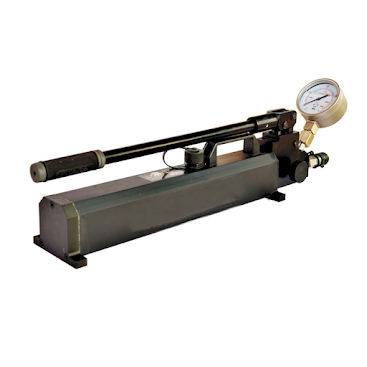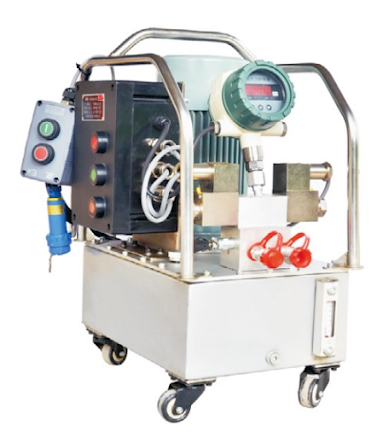If a typical socket wrench doesn't meet your needs, you are able to step up to a hydraulic torque wrench, or a power torque wrench. Both these are made by Hytorc wrench, a highly reputed manufacturer. They are those that I have already been using for a long time, but I'm going to generalize and speak from what each kind one of these simple power tools is for.
First I begins with the basics. A hydraulic torque is made to exert torque on some sort of fastener. The goal could be to quickly and securely fasten or loosen various nuts. They apply an amount of torque to a lubricated fastener beyond what a human could muster, usually together with an impact socket. They certainly were first introduced in the 1960's, but have evolved considerably ever since then as a result of manufacturers constantly updating and advancing their designs. It has lead to the present day hydraulic torque wrench, the one that is light as a result of exotic alloys, having a smaller nose radius to improve the amount of spaces it will match, possessing multi-position reaction members, and you can even now run multiple tools off of one power pack simultaneously. Today's modern torque wrenches are optimized for efficiency and flexibility in their uses.
Why is a hydraulic torque wrench work is that it generates torque using only hydraulic means, it is self ratcheting, and it will need to have an accurate way to measure the amount of torque placed on the fastener. A holding pawl design is popular amongst most manufacturers to lock the wrench in place, but each have some claim that there design is superiorp. I say whichever one works, works. These wrenches routinely have an accuracy rating of +/- 3%, with a top repeatability rate. This makes them suitable for large bolts that require a top amount of accuracy. The largest advantage of a hydraulic wrench doesn't have anything to do with performance, but with those who utilize them - these torque wrenches are significantly quieter than similar output pneumatic impact wrenches. That is an advantage that you can't measure in strength, repeatability, or work output increases - it is all about the healthiness of those who use it.
A power torque wrench is really a gearbox that's attached to a power motor. This gearbox is designed in such a way that it absorbs the torque, allowing the consumer to work the wrench with minimal effort. They are typically used if you have no importance of torque strength accuracy being utilized on the nut or bolt, or when a very stubborn nut must be removed. The gearboxes could be of ratios as high as 4000:1. and this really is adjusted by controlling the voltage. Because of the fact it is powered by electricity, you can find waterproof models for when water is really a concern on the jobsite. It's often confused by having an impact wrench because of its similar design, nonetheless it is actually a totally different tool, and is much more distinctive from a hydraulic torque wrench. Everything comes right down to the work and getting the proper tool for it.
Different Types Of Torque Wrenches
So you're trying to learn more about different types of tools and you've recently learn about torque wrenches and are enthusiastic about learning about the various types?
You've come to the proper place!
As you almost certainly know if you're reading this information, a torque wrench is a kind of wrench designed to apply torque (force around an axis) to a bolt or nut. Torque wrenches are distinguished from other types of wrenches since they have the ability to measure and/or control the amount of force that's applied allowing the appropriate total be utilized and ensuring that the bolt or nut is neither too loose nor too tight.
Let's start most abundant in simple designs and work-out way up.
A straightforward torque wrench is normally just a long wrench by having an analog needle on it. Once the wrench tightens a bolt, the needle will move and point out the value representing the amount of force being used (for example, 50 pounds of force). These will occasionally have to be calibrated, and because the needle is frequently exposed it could be bent or moved accidentally and no more point out the correct value.
Additionally, there are electronic torque wrenches that work basically exactly the same, except in place of an analog gauge they have a digital display. The benefit to this really is that it could be easier to learn because the value is shown in numbers along with being easier to learn with less light (assuming it is bright or runs on the backlit display) such as if you're working behind a big little bit of machinery that's blocking the light.
You will find torque wrenches which can be set to a particular level of force that'll stop applying force once that level is reached to greatly help prevent over-tightening. With this type you don't have to target the maximum amount of on the gauge because it will stop tightening at the correct force.
Hydraulic torque wrenches use hydraulics to tighten or loosen a nut or bolt. This sort of wrench runs on the predetermined amount of torque and can operate more quietly than similar pneumatic wrenches, and undoubtedly many people feel hydraulic wrenches certainly are a better choice due to the precise nature involved in tightening bolts.
What Are Torque Wrenches? What Do They Do?
If you've ever loosened lug nuts on car to take the wheels off or tightened them after putting the wheels on, you've probably used a torque wrench. Well, let me rephrase; if you've ever put the lug nuts back on a car, hopefully you used a torque wrench.
A torque wrench is really a wrench built to allow you to tighten nuts or bolts without over-tightening them, that is prevented in a variety of ways.
Lets go back to the lug nuts. If the lug nuts on your vehicle have to be tightened to 75 foot pounds you need to make sure you have a method of knowing when you've reached 75 foot pounds. Are you just going to use a regular wrench and guess?
That's why I said above that "hopefully" you used a torque wrench. A standard torque wrench can have a gauge onto it that teaches you how much force you're applying. As you tighten the nuts the needle will point out the amount of force being used that'll permit you to apply exactly the right amount.
Most wrenches of this type are fairly long to allow sufficient leverage to generate enough force. If you're tightening your lug nuts with a 16" wrench you're going to have a much simpler time than if you test it with a 10" wrench, for example.
While some types of these wrenches just have a gauge to inform you how much force you're applying, others already have mechanisms that prevent you from applying an excessive amount of force. For instance, some wrenches have a clutch that disengages when the correct amount of force is applied so you cannot tighten the bolt any further.
Now, imagine if you're dealing with bolts which can be bigger compared to the lug nuts that hold your wheels on? What if you want to tighten something to 10,000 feet pounds in place of 100? In these cases there is another kind of wrench, a hydraulic torque wrench, that uses hydraulic power to apply the necessary force to the bolts. Hydraulic torque wrenches have been around because the mid-60's but recent improvements in their design have made them smaller, lighter, and and more easily able to match into tight spaces. This kind is known as much better than pneumatic wrenches as they are quieter, lighter, and more accurate.
How A Pneumatic Impact Wrench Works
A pneumatic impact wrench or air gun is a very useful tool for removing stubborn nuts and bolts. It runs on the strong jerking motion to greatly help free fasteners which were over tightened or which have rusted over time. In comparison to a normal wrench, this can be a real improvement, and can make difficult jobs far easier. There is a wide selection of different types of impact wrench out there, pneumatic being just one of them. In this information, we will consider the alternatives and their relative merits along with explain the big event of the impactor generally.
How an Air Gun Works
An air gun differs from other powered wrenches in that it delivers its torque in instantaneous jolts as opposed to with a steady force. Essentially, the interior motor spins a rotating mass, which then hits the output shaft. This repetitive impact results in the rattling noise and also in the potency of the wrench. The numerous minor impacts work to cut back the torque felt by the consumer while greatly increasing the instantaneous torque placed on the nut or bolt. Multiple short, sharp applications of torque can remove even probably the most stubborn fastener, even one that's rusted severely. Models typically differ in both their torque and their weight, each of which can make a positive change to the tool's usability.
Different Varieties
A pneumatic impact wrench has several competitors in the form of different drive mechanisms. Hydraulic impact wrenches are used in some industrial applications where pressured hydraulics can be found, but electric impact wrenches are very popular among home users. It's even possible to have cordless electric variants, although these are typically down on power compared for their more heavy-duty brethren. The sort chosen is determined by the context and circumstances; a hobbyist who needs a portable powered wrench will likely prefer a cordless electric version, while much more serious professional use will likely require the better pneumatic option.
Conclusion
A pneumatic impact wrench is a great selection for removing difficult nuts or bolts. There are several alternatives, like the cordless electric variant, which might work better for some people, but also for sheer power and performance, it is hard to beat compressed air. Check out the torque and weight of the air gun to determine its suitability. There is no sense in investing in a wrench with either much less or vastly greater torque than you require, and huge model will cause you some discomfort when used for long periods.





No comments:
Post a Comment